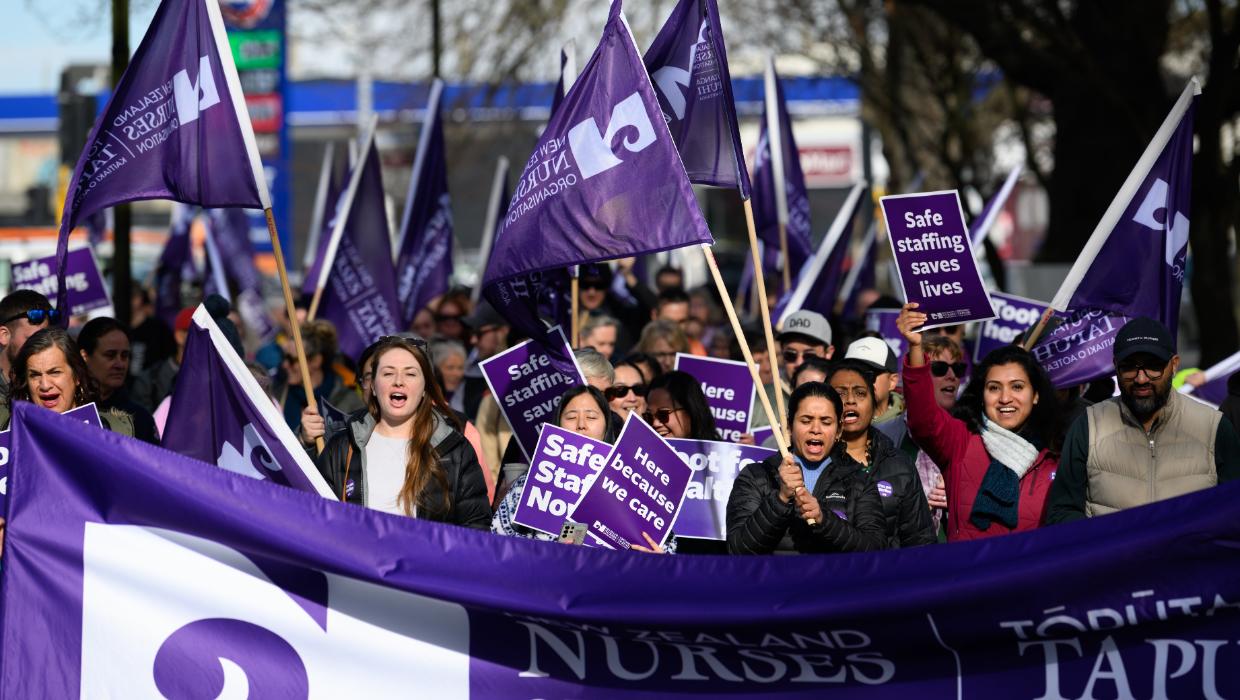Health
Massive Public Sector Strike Scheduled for October in New Zealand

Tens of thousands of public sector workers in New Zealand are set to participate in a widespread strike action in October. The New Zealand Nurses Organisation has confirmed that its 36,000 members, including nurses, midwives, and health care assistants, will join the walkout. They stand alongside nearly 40,000 primary school educators who announced their strike earlier this month.
The announcement follows a vote by the Public Service Association (PSA) in which 11,500 allied health workers, including social workers, physiotherapists, and occupational therapists, agreed to a 24-hour strike on October 23. In addition, 3,500 mental health and public health nurses have also voted to strike, highlighting significant discontent within the sector.
In a show of solidarity, the chief executive of the New Zealand Nurses Organisation, Paul Goulter, expressed pride in the collective action. “Te Whatu Ora nurses, midwives, health care assistants and kaimahi hauora will stand proudly alongside primary school teachers, allied health and mental health workers,” he stated.
As the strike date approaches, senior doctors are also considering their options. They are currently balloting across five major cities: Auckland, Hamilton, Wellington (including Hutt Valley), Christchurch, and Dunedin. This could involve around 4,000 doctors who are deliberating on potential industrial action.
The Post-Primary Teachers Association (PPTA) is similarly gauging its members’ sentiments regarding a strike, with approximately 19,700 teachers covered by the PPTA Secondary Teachers’ Collective Agreement. While essential services must continue during strikes, the total number of potential participants could exceed 100,000 union members from various sectors.
PSA national secretary Fleur Fitzsimons remarked on the scale of the upcoming strike, describing it as “unusual.” She noted, “Undoubtedly, this will be one of the biggest strikes New Zealand has ever seen, and that goes to show the level of frustration from workers about how difficult it is to make progress in collective bargaining.”
As the situation develops, the implications for public services and the ongoing negotiations between unions and the government will be closely monitored. The planned strike reflects widespread dissatisfaction among workers across various sectors, indicating a critical moment in New Zealand’s labor landscape.
-

 World5 months ago
World5 months agoTest Your Knowledge: Take the Herald’s Afternoon Quiz Today
-

 Sports5 months ago
Sports5 months agoPM Faces Backlash from Fans During Netball Trophy Ceremony
-

 Top Stories2 weeks ago
Top Stories2 weeks agoTongan Star Eli Katoa Shares Recovery Update After Surgery
-

 Lifestyle5 months ago
Lifestyle5 months agoDunedin Designers Win Top Award at Hokonui Fashion Event
-

 Entertainment5 months ago
Entertainment5 months agoExperience the Excitement of ‘Chief of War’ in Oʻahu
-

 Sports5 months ago
Sports5 months agoLiam Lawson Launches New Era for Racing Bulls with Strong Start
-

 World5 months ago
World5 months agoCoalition Forms to Preserve Māori Wards in Hawke’s Bay
-

 Health5 months ago
Health5 months agoWalking Faster Offers Major Health Benefits for Older Adults
-

 Lifestyle5 months ago
Lifestyle5 months agoDisney Fan Reveals Dress Code Tips for Park Visitors
-

 Politics5 months ago
Politics5 months agoScots Rally with Humor and Music to Protest Trump’s Visit
-

 Top Stories5 months ago
Top Stories5 months agoUK and India Finalize Trade Deal to Boost Economic Ties
-

 Health3 months ago
Health3 months agoRadio Host Jay-Jay Feeney’s Partner Secures Visa to Stay in NZ









